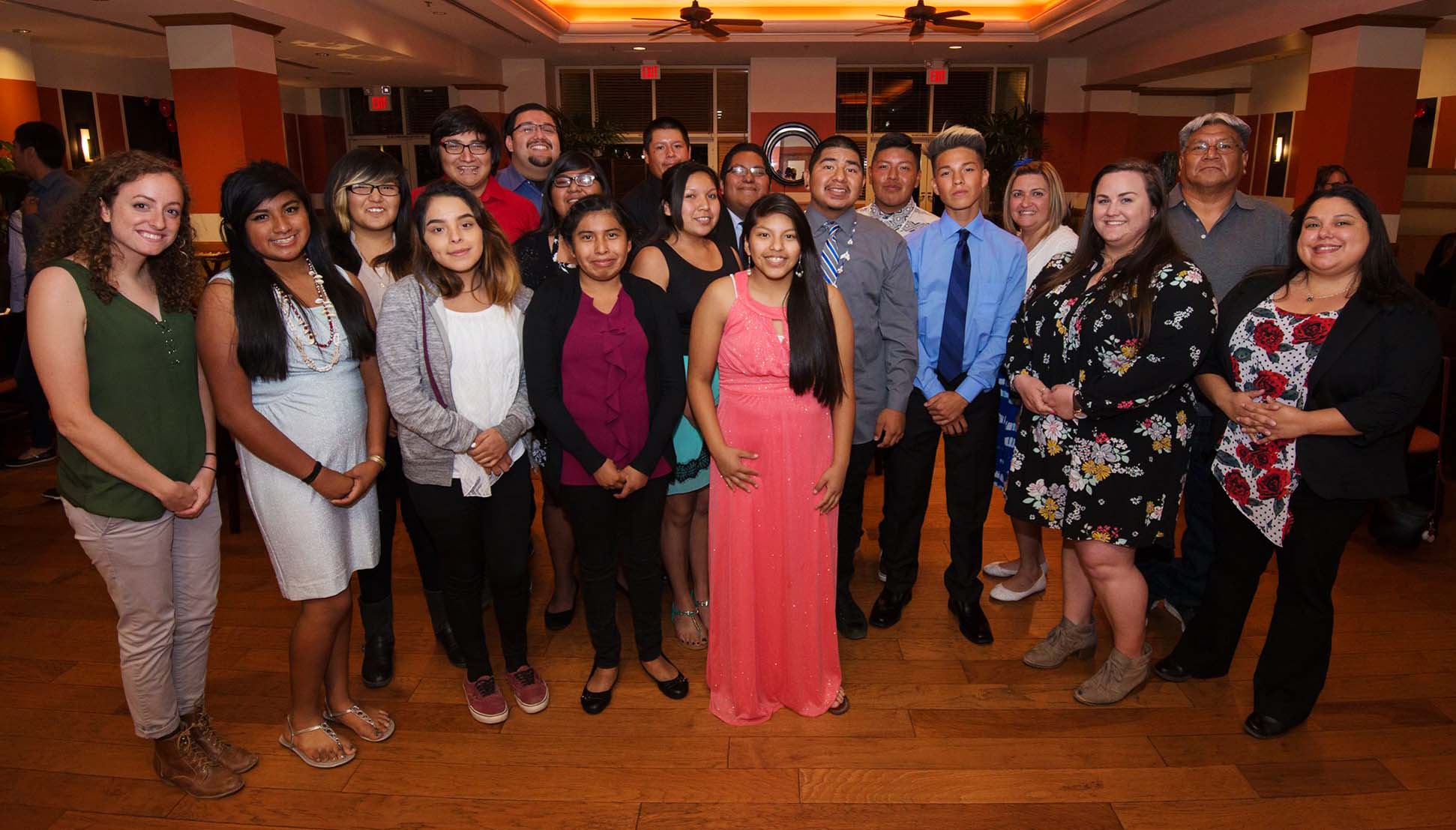A team of staff at Tohono O’odham Community College (TOCC) and local high schools, led by Daniel Sestiaga Jr. at TOCC, has helped nearly 100 students prepare for and college success thanks to a grant from the American Indian College Fund and AT&T.
The program, geared for students who need the most support, allows students who don’t often have the opportunity to share concerns about themselves, family, friends, and future, and helps them to complete high school.
Students and staff from the S.T.A.R.T. Program attending the 2017 ASU Cultural Professionalism Etiquette Dinner.
The program was created with five pillars that are steeped in the Tohono O’odham Himdag (culture, way of life, values and uniqueness of the Tohono O’odham) and includes personal growth, global and civic engagement, community-building and belonging, preparation for academic and life skills, and college and career awareness. Using those five pillars as the guide, Sestiaga says TOCC has developed programming to establish trust with the students and help them develop their skills and their identities to be future leaders in their tribal community. As part of that, high school students are given the tools they need to go on to college as an important component of educating future leaders.
For example, the global and civic engagement pillar helps students get involved with issues that impact the Tohono O’odham Nation locally as well as students’ rights on a state and national level. This includes programs to discuss voting rights, police brutality, and social justice issues.
The Tohono O’odham nation straddles the U.S./Mexico border, and many students have relatives and participate in ceremonies and community events on both sides of the border. After the presidential election last year, many were feeling anxious about what would happen to their community if a border wall were to be constructed, Sestiaga says. The program brought students together to discuss this issue and others impacting them and their nation, and encouraged participants to explore ways to engage in events and make their voices heard in a constructive way.
Another pillar, the academic and life skills programming, provides students with the tools they need to succeed academically in high school and in college and teaches them how to use those skills in everyday life. It includes tutoring students with math and science workshops and classes that teach goal-setting using passion planners, vision boards, and art projects.
The program also has a dual-enrollment component to allow high school students to take coursework at TOCC. The benefits include allowing students to complete their introductory coursework while still in high school, keeping college costs down—75% of tribal college students are eligible for Pell Grants, so it also ensures that they will be less likely to exhaust their funding. Sestiaga says an added benefit of dual-enrollment programs is getting students introduced to college culture early to eliminate the anxieties experienced with enrollment and choosing coursework. It gives students more challenging coursework earlier, making the transition to full-time college more successful.
The secret to the program’s success is the strong team of educators making it run. “There is no way I can do this without this team,” Sestiaga says. “There is a high school liaison, a parent liaison, college mentors, and program tutors. You need people who really care about students and doing whatever they need to help them succeed.”
Tohono O’odham students posing for a photo at their campus in Sells, Ariz.

